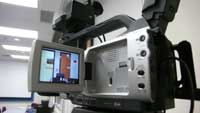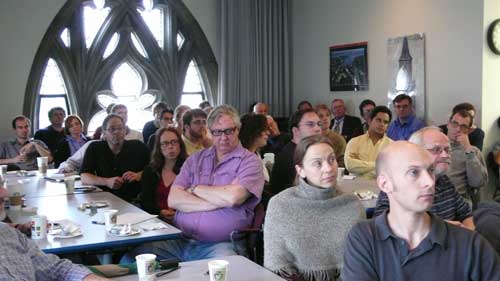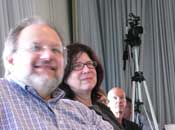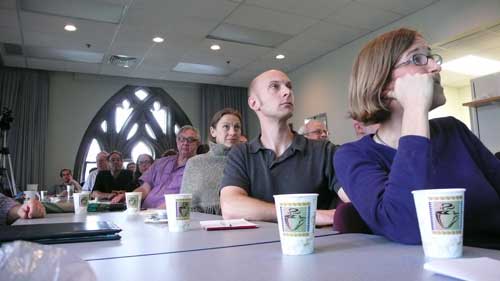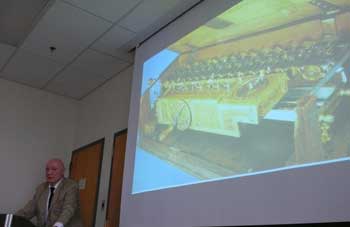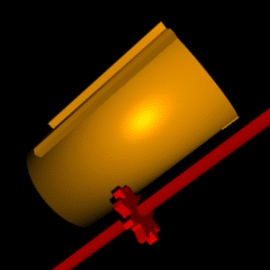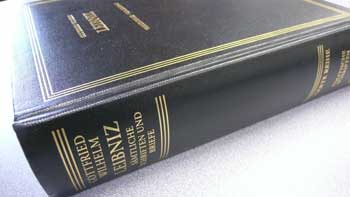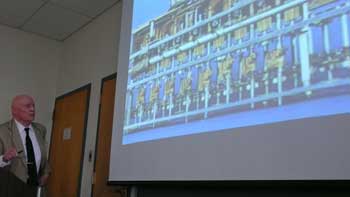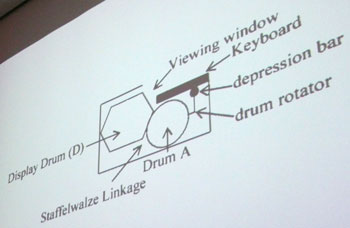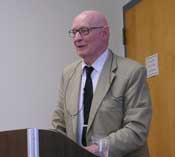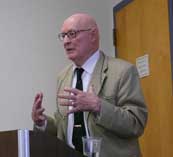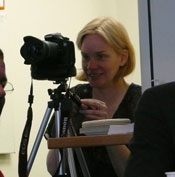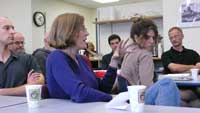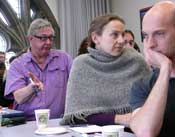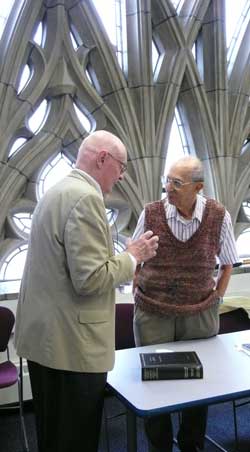

![]()
home
::: about
::: news
::: links
::: giving
::: contact
![]()
events
::: calendar
::: lunchtime
::: annual
lecture series
::: conferences
![]()
people
::: visiting fellows
::: postdoc fellows
::: resident fellows
::: associates
![]()
joining
::: visiting fellowships
::: postdoc fellowships
::: senior fellowships
::: resident fellowships
::: associateships
![]()
being here
::: visiting
::: the last donut
::: photo album
|
Leibniz's Greatest Secret
Introducing Nick is never easy. What can one say about a scholar who has held every position of leadership in our community: Chair of the Philosophy Department, Director of the Center, University Professor of Philosophy and now Co-Chair of the Center? In over 60 years of scholarship, he has written over one hundred books ranging over many topics in philosophy. For me a milestone would be to read one hundred books. His expertise in today's topic, Leibniz, is deep and unchallengeable. At age 22, in 1951, he completed a dissertation on Leibniz at Princeton. He has published several books since then on Leibniz. After our opening formalities, Nick has the floor. We will eventually hear the great secret. But Nick realizes that a great secret too easily learned will not seem so great, no matter how wonderful it is. We have to earn it. The stage has to be set.
Leibniz was also a practical man and conceived all sorts of ingenious mechanical innovations: windmills, pulleys, hydraulics, and many more, including a precursor of the modern tank track. Leibniz also thought a lot about thought. That led him to the activity that combines his expertise in engineering and in philosophy. It is his design of a calculating machine that, in some tiny way, mimics that mystery of mysteries, human thought itself. He had built these machines and spread them over the courts and learned societies of Europe. They were the cartes de visites that gained him entry. We knew, as this catalog of artifact and idea unfolded, that we were coming closer to the great secret. It was a tease and a challenge to the audience to guess just how all this would come together. Nick began to discourse more closely on the specific design of Leibniz's machine. One of its central components was the "staffelwalze"--the step drum. It is a simple gear mechanism in which a drum turns uniformly and, through its stepped protuberances, conveys an irregular motion to the cog it engages. As homework, Nick ordered, we were to go to Wikipedia and find the animation of the device. Here it is:
Our thoughts were buzzing. What is it about this little device that leads up to a great secret? Then finally it was revealed. Leibniz's papers, if ever they are published, will comprise around 90 volumes. Some 50 have already been published. In this enormous corpus, today's topic is mentioned in just three memoranda. They are hidden in Volume 4 of Series 4 that was published in 2001. There we have Leibniz's notes for a proposal he took first to the Duke of Hannover in 1679 and then, in 1688, to Leopold I, Emperor of the Holy Roman Empire. Leibniz proposed a cipher machine, that is, a device for encoding and decoding messages. How to encipher messages was already well understood at least in its rudiments at that time. The simplest scheme was just to replace each letter by another according to a simple table. That scheme was easy to break. So more sophisticated schemes would shift to new tables with each new letter of the message. The manual methods then employed precluded anything too fancy. Leibniz realized that these limits could be passed if a machine were to do the enciphering. His step drum was just the device need to make the machine work. Embedded within a cipher machine, it would advance irregularly, injecting the irregularity into the text that made the cipher invulnerable to practical assaults.
Alas for Leibniz, his proposal died. Neither the Duke nor the Emperor were interested. Princes had their own cipher offices and they all thought they were doing well enough. Anyone who knows cryptography will realize their mistake. The simple ciphers they were implementing manually are shockingly easy to crack. Leibniz' loss was their loss as well.
|
